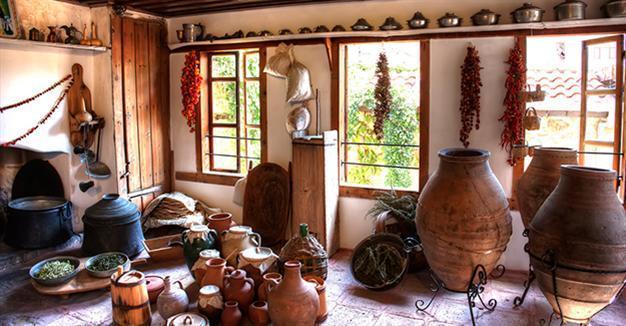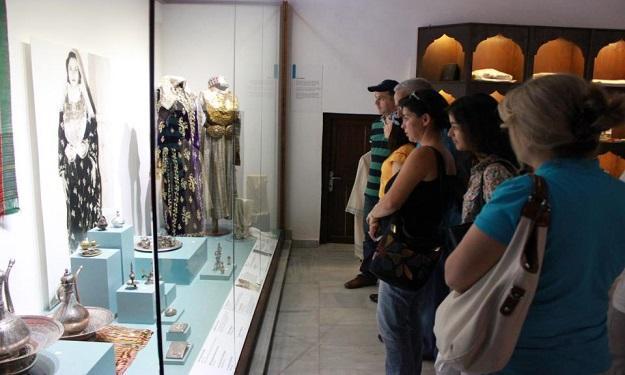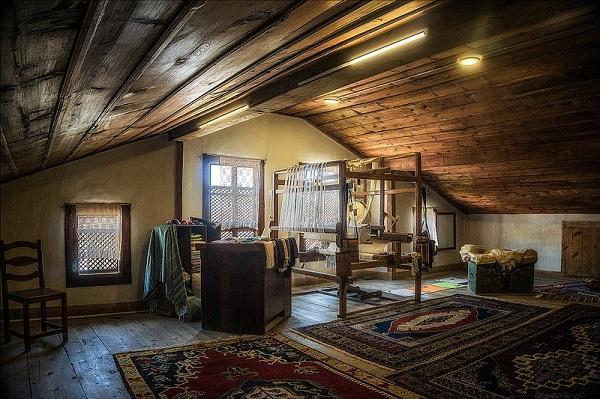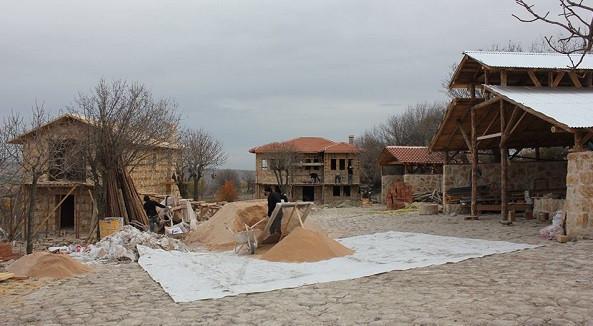‘Yaşayan Müze’ offers an interactive museum experience
Emrah Güler - ANKARA

“Traditional children’s games and toys,” “Declaration of love during the late Ottoman,” “From Middle Asia: The art of felt,” “Turkish scripture culture: From Kök Turks to the Ottoman,” “The Flood and ashure from mythology to history.” These are not the titles of seminars, studies or books on Turkish culture. They are the themes that are in the repertoire of the Yaşayan Müze (The Living Museum), which has been welcoming visitors in the town of Beypazarı near Ankara since 2007.
The Living Museum has been offering an interactive experience through re-enactments to its visitors, preserving and offering interpretations on both the tangible and intangible cultural heritage of Turkey. A pioneer in the country, the museum exhibits traditional life in a setting of authentic Turkish houses built in the style of a century ago, the late-Ottoman and early-republican eras.
The late 19th century is not only exhibited, but recreated to allow visitors to genuinely experience the lifestyle, rituals, ceremonies and traditions of the period. Sema Demir is the founder of the Living Museum, as well as its two sister museums, the Turkish Bath Museum and Anatolian Open Air Museum. Demir is a former teacher of Turkish language and literature, and an academic on Turkish folk culture, cultural heritage and living museums.
She is also the recent recipient of the Woman Entrepreneur of the Year Award, organized by Garanti Bank, Ekonomist magazine and the Women Entrepreneurs Association of Turkey (KAGİDER). Demir recently talked to the Hürriyet Daily News on the Living Museum, how the idea for an interactive cultural space was shaped, and how it came to life.
“The idea for developing a living museum was shaped when I was studying Turkish Folk Science at [Ankara’s] Hacettepe University,” said Demir. “The basic premise was that, only those who know about their culture, arts and history can live together in peace.”
Recreating traditions and handcrafts
An increasing interest and intensive research on different kinds of museums and the experiences they were offering across the world shaped the idea of the Living Museum. After a string of proposals to universities, municipalities and private investors, Demir’s offer was accepted from the then-mayor of Beypazarı, none other than her hometown.
“The Living Museum exhibits and offers an interactive experience and recreates traditions, handcrafts and products of oral culture that have no way of surviving in today’s modern life with technological advances and the present economic systems,” said Demir. “The Living Museum also displays collections of original furniture, carpets, kilims, household items and costumes of a century ago.”
When Demir talks about “collections,” they are not only material, tangible collections. “We perceive and value words, voices, dances, beliefs from our collective memories; in short, our past as collections,” said Demir.
Inhabiting a 19th-century townhouse, the Living Museum welcomes its visitors with a chance to travel back in time as museum staff greet visitors with costumes, along with stories, in line with the specific theme from the event calendar.
Demir sites some examples, like when the theme is fairy tales. The famous fairy tale character and an archetype of Turkish oral literature, Keloğlan, takes center stage in an interactive experience in which a museum staff member dressed as Keloğlan’s mother greets visitors, asks them questions and makes them part of the exhibition.
The ‘producing individual’
The experience of visiting the Living Museum is not limited to lively conversation, as the visitors are asked to paint, print, and act in traditional and mostly long-gone forms of art, like ebru, tezhip and shadow play. The Living Museum also offers library services, focusing mostly on the subject of folklore. Visitors can also taste some traditional dishes and beverages that aren’t widely available.
“A pot, an amphora or a wall painting from seventh century cannot be reproduced. Yes, we need to protect them. But don’t we need to protect a word or a tradition from seventh century?” asks Demir on the Living Museum’s website. “These objects we are trying to protect are part of some tradition, part of some life long gone. We have to bridge the past and today through protecting not only, for instance, the altar, but all the verses and the rituals associated with it. That is possible.”
Living museums are widespread in Europe, the Far East and the United States. “These museums are generally museums of ethnography, associated with folk art and traditions. These are not ‘storage museums,’” said Demir. “It is never solely objects these museums are set to protect. These museums recreate certain periods, and encourage visitors to become part of these periods. Visitors are never the audience, the spectator.”
Summarizing the sentiment for the Living Museum and the similar ones across the world, Demir says, “The ‘consuming individual’ transforms into the ‘producing individual.’”
 “Traditional children’s games and toys,” “Declaration of love during the late Ottoman,” “From Middle Asia: The art of felt,” “Turkish scripture culture: From Kök Turks to the Ottoman,” “The Flood and ashure from mythology to history.” These are not the titles of seminars, studies or books on Turkish culture. They are the themes that are in the repertoire of the Yaşayan Müze (The Living Museum), which has been welcoming visitors in the town of Beypazarı near Ankara since 2007.
“Traditional children’s games and toys,” “Declaration of love during the late Ottoman,” “From Middle Asia: The art of felt,” “Turkish scripture culture: From Kök Turks to the Ottoman,” “The Flood and ashure from mythology to history.” These are not the titles of seminars, studies or books on Turkish culture. They are the themes that are in the repertoire of the Yaşayan Müze (The Living Museum), which has been welcoming visitors in the town of Beypazarı near Ankara since 2007. 

